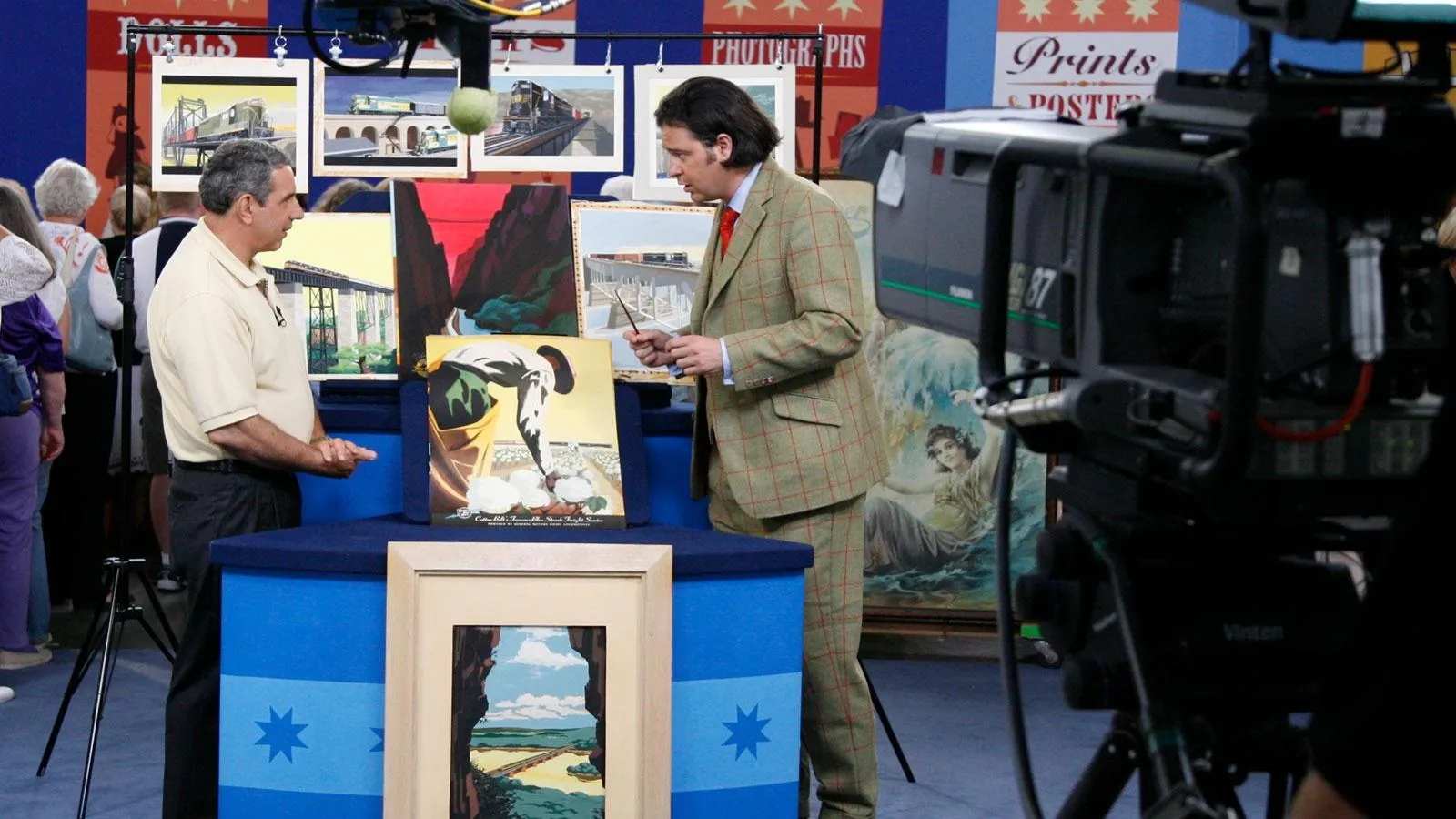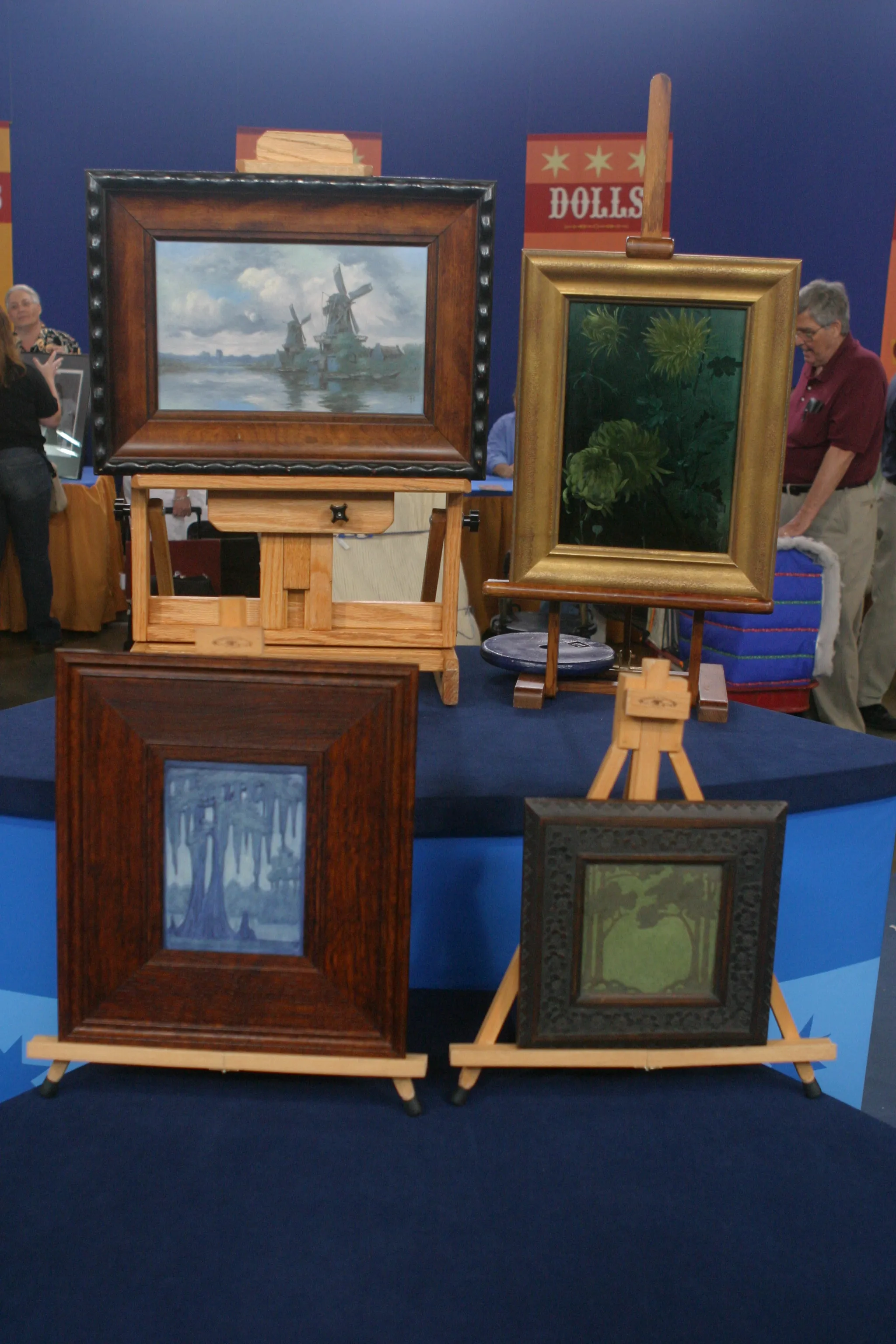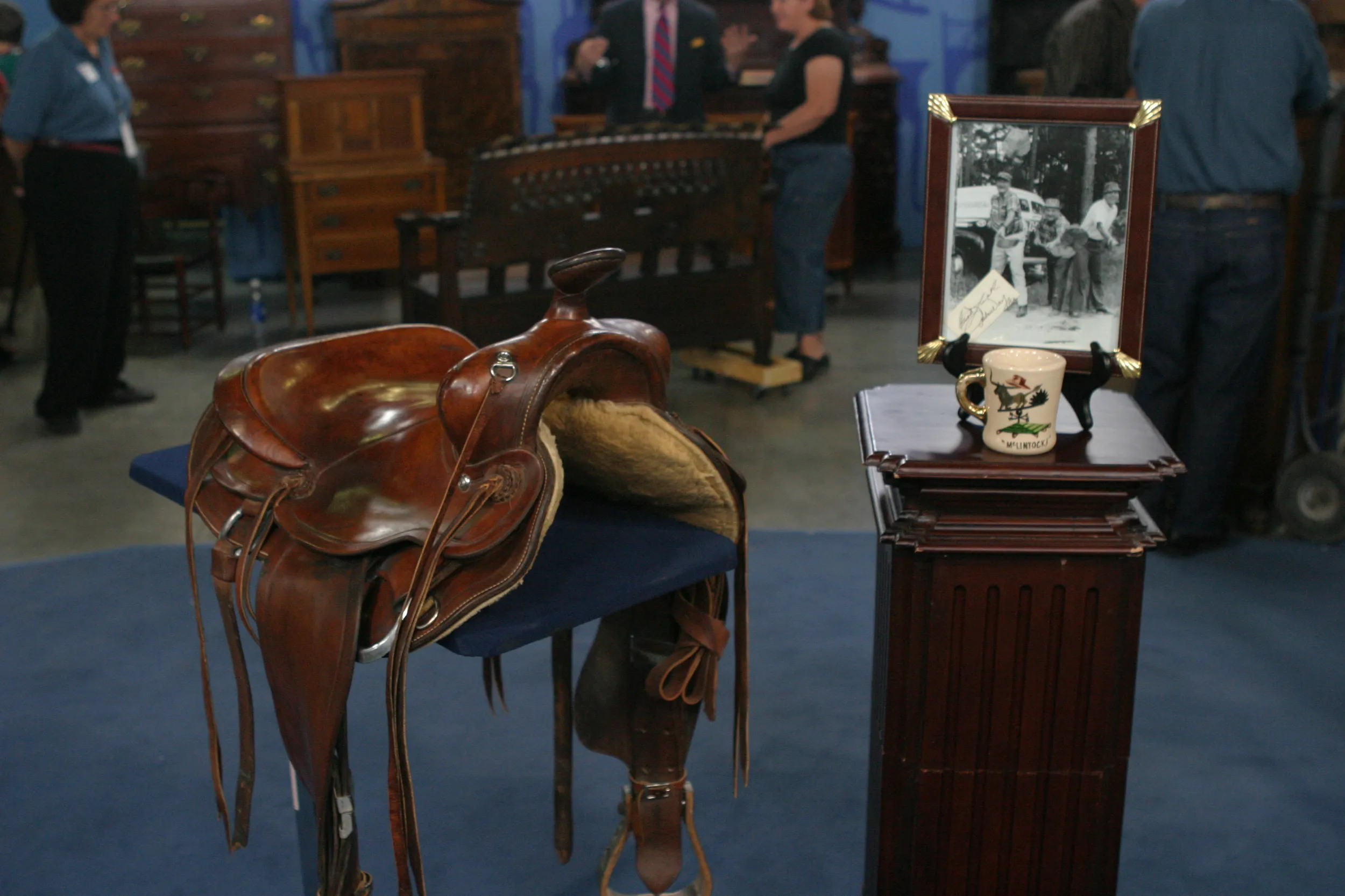GUEST: I started collecting this about ten to 15 years ago. It's an Art Deco type of motif that was used on the cover of "Railway Age" magazine from about 1950 through 1956. The artist is Bern Hill. The people at our plant-- I work for Electro-Motive, the people who make locomotives--never really liked this, because he tended to minimize the locomotive and put a lot of the background into his paintings. But from what I understand, Hill liked to try to capture the essence of a railroad in his scenery. All of this artwork was actually thrown away at our company and rescued by other people. As I saw the pieces for sale in private collections, I would buy them, one, two, or whatever.
APPRAISER: In this collection, you have some original artwork and you have some of the actual posters. One of the artworks you've brought by Bern Hill--and everything, as you said, is by Bern Hill--is this piece hand-signed by him, as some of the others are. And we also have here the poster that was created after the artwork.
GUEST: Yes.
APPRAISER: And I know you're fairly familiar with the value of these posters through your work on the internet. So the values of these posters you think are…
GUEST: Anywhere from between $1,200 to $2,200 each.
APPRAISER: I'm gonna go with the upper end of what you think to be the estimate, and estimate them at $2,000 A piece.
GUEST: Oh.
APPRAISER: And I just want to go through some of the images, because they are so unique. I've never seen any of them before. I think it's something exciting for other people to look at, such as the Modernist design--the shadow of the bridge, in this case. Here, we have a very European-style low vantage point, with a big wheel of one train in the foreground and the engine. They keep going and going and going. Here are some beautiful pastel images of the Southwest for the Santa Fe Railroad. Truly, an exceptional collection of posters. But your question today wasn't about the posters. Your question was more about the original art.
GUEST: Absolutely.
APPRAISER: You were having trouble pricing the original artwork.
GUEST: Yes, I have no idea at all.
APPRAISER: I'm just gonna show a few more of these absolutely colorful and fantastic and graphic images. As far as the value of the original artwork goes, and we have here two other poster studies, and we have here what we call locomotive portraits along the top.
GUEST: Okay.
APPRAISER: Do you want the good news or do you want the bad news?
GUEST: All of it.
APPRAISER: I'm going to give you the bad news first.
GUEST: Okay.
APPRAISER: I cannot explain this to you. I can only tell you it's a matter of fact...
GUEST: Yeah.
APPRAISER: ...that within the poster community...
GUEST: Yes.
APPRAISER: ...the original artwork for posters tends to sell for less money than the poster itself. Now, this is counterintuitive, I know.
GUEST: Yeah.
APPRAISER: But all the times that I've sold-- we call them maquettes, which means the, it's the French word for the study of the poster --maquettes-- in the artist's own hand, the originals tend to sell for less money than the actual posters.
GUEST: That's pretty amazing.
APPRAISER: That's the bad news.
GUEST: Okay.
APPRAISER: Here's the good news.
GUEST: Okay.
APPRAISER: The good news is that these images actually transcend the poster market.
GUEST: Okay.
APPRAISER: They touch on railway memorabilia. They touch on Modernism. They touch on great graphic design. From the 1950s, most of them...
GUEST: Yes.
APPRAISER: In my estimation, the original studies for the posters themselves are worth, at auction, $3,000 to $4,000 apiece.
GUEST: Oh, wow!
APPRAISER: And the little train profiles, or little train portraits, are worth between $1,000 and $1,500 apiece.
GUEST: Okay, that's good.
APPRAISER: And with the 12 posters, with a value of $24,000.
GUEST: Okay.
APPRAISER: What's the most you paid for one of the original pieces?
GUEST: $500 for the one in the front. I paid a dollar apiece for the posters.
APPRAISER: A dollar apiece is a good, you know… You're buying them for a dollar and selling them for $2,000, you're doing all right.
GUEST: I think I'll do fine.













